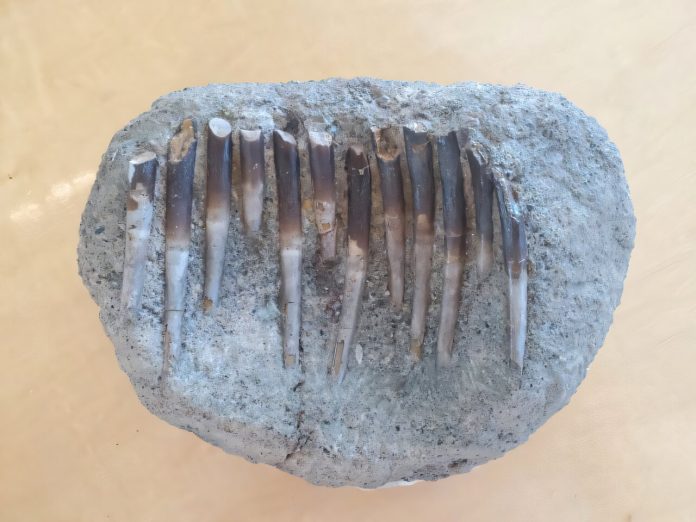
New research has uncovered surprising details about what dinosaurs ate by analyzing the chemistry hidden in their fossilized teeth.
Scientists have discovered that plant-eating dinosaurs living 150 million years ago had very different diets, helping to explain how so many giant species could survive in the same area without running out of food.
The study, led by Liam Norris, a recent Ph.D. graduate from The University of Texas at Austin, used calcium isotope analysis on ancient tooth enamel to reveal which parts of plants the dinosaurs preferred.
The findings were published in the journal Palaeogeography, Palaeoclimatology, Palaeoecology.
Tooth enamel preserves chemical signals that reflect a dinosaur’s diet. Different plants—and even different parts of the same plant—contain unique chemical signatures.
By shaving off tiny samples of enamel from the teeth of 17 dinosaurs and ancient reptiles, the team was able to piece together a more detailed picture of who ate what in the Late Jurassic ecosystem.
The fossils came from a famous site called Carnegie Quarry in northeastern Utah. This site, now part of Dinosaur National Monument, is known for its rich collection of dinosaur skeletons.
The fossils were preserved during what scientists believe was an intense drought lasting from a few months to a few thousand years.
Norris and his team studied teeth from five prehistoric species: the plant-eating Camarasaurus, Camptosaurus, and Diplodocus, and the meat-eating Allosaurus and Eutretauranosuchus. By analyzing the calcium isotope ratios in their teeth, they found that these massive herbivores were not just eating plants at different heights—as previously thought—but were also selecting different parts of the plants.
For example, Camptosaurus appeared to be a picky eater, choosing soft, nutrient-rich parts like leaves and buds. Camarasaurus mostly munched on conifers and tough, woody plant material. Diplodocus had a mixed diet, feeding on soft ferns and horsetail plants as well as more fibrous vegetation. This diversity in plant preferences suggests these dinosaurs avoided competition by dividing up the available food sources.
“These findings match what we’d expect based on the shapes of their bodies and skulls,” Norris said. “Different snout shapes, different heights, and now we have solid chemical evidence showing they really were eating different things.”
The meat-eating dinosaurs also offered some interesting clues. Allosaurus and the crocodile-like Eutretauranosuchus showed overlapping chemical signatures, but the data suggests Eutretauranosuchus probably ate fish, while Allosaurus likely preyed on plant-eating dinosaurs—possibly even the ones included in the study.
This new understanding of ancient diets adds to the picture of a highly productive and complex ecosystem that could support many large animals with specific food needs.
“It just shows how rich and spectacular this Jurassic ecosystem really was,” Norris said. “And the chemistry in these teeth helps us bring that world back to life.”
Source: KSR.



